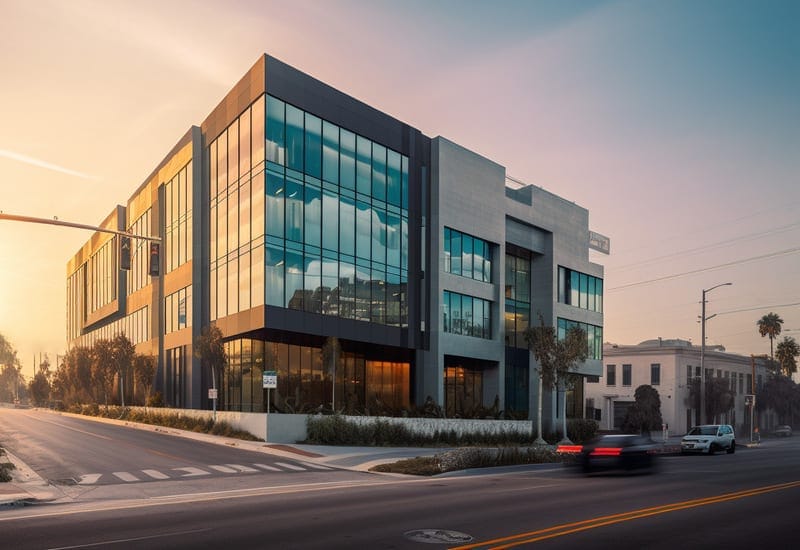For any medical practitioner investing in property, it’s essential to understand and utilize best practices for maximizing your returns. Whether you are a healthcare provider or an investor in a related industry, understanding the market and having access to smart strategies can make all the difference when assessing potential investments. In this blog post, we will explore various tips and strategies specifically aimed at helping you maximize your profits on medical properties! Learn how to spot key indicators of high-yielding investments, create strategies suited to different growth cycles within specific markets and gain firsthand insights into the ever-growing landscape of the medical real estate.
Maximizing your medical property returns is essential because it ensures that your investment in the property generates the highest possible returns. This allows you to make the most of your investment, create a sustainable income stream, and potentially increase the value of your property over time.
Key Takeaways
- Maximizing your medical property returns requires an understanding of the current real estate market, as well as key indicators of successful investments.
- Additionally, creating strategies suited to different growth cycles within specific markets, and gaining firsthand insights into the ever-growing landscape of medical real estate can help increase profits.
- Understanding the growth cycles within specific markets will help you create the best strategy to maximize returns.
Researching the Market
Identifying potential locations
Maximizing your medical property returns is crucial when navigating the competitive world of healthcare real estate. Several essential tips and strategies can tremendously help you in achieving this goal. One such approach involves diligently researching the market to identify trends, potential pitfalls, and opportunities that can enhance your investment strategy.
Also, to stay well-informed by attending industry conferences, networking with fellow professionals, remaining up-to-date on industry news, and utilizing data-driven resources. Another vital strategy involves identifying potential locations that demonstrate strong demand factors for medical properties while also considering the facility’s proximity to hospitals or medical centers. This will ensure that your property remains relevant and profitable in the ever-evolving healthcare demand.
Read on here to learn about commercial real estate trends that can help you make informed decisions about your investments. We’ll keep you up to date on the latest news, regulations, and developments in the industry so that you can stay informed and maximize your success.
Understanding the competition
Having success as a medical property investor starts with a comprehensive understanding of the market you’re getting into. Understanding who your potential customers might be, where they are located, and the existing competition is essential to maximizing your returns. Investing in your research can help save time and money in the long run, and ensure you have all the knowledge necessary to make informed decisions that benefit both you and your customers.
Sources like market assessments, industry reports, and even interviews with professionals active in the area can provide valuable insight into trending areas that should not be overlooked. Craft an educated value proposition tailored to each audience – these factors could significantly affect demand in purchasing decisions.
Examining demographics and trends
In today’s dynamic healthcare landscape, maximizing your medical property returns is more important than ever. To achieve this goal, it is essential to have a deep understanding of the market and the communities your properties serve. Begin by conducting thorough research into the demographics and socioeconomic factors that influence patient demand and utilization of medical facilities in your area. Pay close attention to trends in population growth, aging, and the prevalence of chronic conditions.
By examining these factors, you can tailor your properties to cater to the specific needs of the target population, ultimately increasing the attractiveness and value of your medical real estate.
Financing Options
Maximizing the returns on your medical property investment can be achieved through various tips and strategies, one of which includes exploring different financing options. In the realm of commercial real estate loans, there are four main categories to consider:
Financing options for medical commercial properties
Real estate loans can be arranged in varied ways. When supplied by a senior lender such as a bank, credit union, or the public debt markets – through commercial mortgage-backed securities for instance – their structure and terms would significantly differ from those of private equity lenders.
Owner–Occupied Commercial Mortgages
In this case, the property serving as collateral is controlled by an operating company with shared ownership and/or control between itself and the borrower.
To service the mortgage, the operating company relies on its cash flow. Thus, credit is approved based on their 5 Cs of Credit performance metrics which reflect their business and financial well-being. These loans have a diminishing balance, generally paid off in full over 20-25 years.
When calculating the debt service coverage ratio, it’s important to consider both the operating company and building expenses holistically. This is to avoid double-counting occupancy costs within financial metrics. Take for example rent paid by the operating company; that can be considered as rental revenue for the building owner, but only if arranged at a fair market rate.
Income-Producing Commercial Mortgages
Income-producing commercial mortgages offer an appealing investment opportunity, as borrowers – who own properties occupied by third-party tenants – generate cash flow from those tenants’ rental payments to service their loan obligations. To ensure the success of such an endeavor, it is crucial for lenders to meticulously analyze lease terms, rent rolls, and other factors such as tenant quality and lease maturity profile.
While this type of commercial mortgage has been reducing in recent years, properties typically amortize over 15-25 years, depending on their class. Versatile properties like warehouses or generic offices are likely to receive longer amortization periods, while specialized or high-risk properties, such as self-storage facilities or golf courses, tend to have shorter amortization.
By understanding the nuances involved in income-producing commercial mortgages, lenders can make informed decisions and help foster mutually beneficial investment relationships with borrowers.
Construction Loans
In the realm of commercial real estate lending, construction finance stands out as a highly specialized niche. Its primary function is to provide the necessary financial backing for the development and redevelopment of physical structures, with the end goal of generating potential cash flow. However, navigating construction finance can be a bit more complex and challenging due to its increased level of risk. Unlike a standard amortizing commercial mortgage, which relies on the certainty of consistent monthly payments, construction finance hinges on the success of the project itself. Maintaining a professional and friendly approach to this area of lending, along with a comprehensive understanding of its intricacies, is essential to ensure a solid foundation for a successful construction venture.
As your project progresses, you can draw credit in stages for interest-only loans. Here’s the best part: no cash payments are required until completion. At that point, both principal and accrued interest must be paid off – either with proceeds from the property sale or via a commercial mortgage designed specifically to take it out.
Bridge Loans
Bridge financing can help developers transition between traditional forms of credit. For example, if a building project is finished and the construction loan needs to be repaid but there’s an unavoidable delay in securing tenants before locking down a commercial mortgage, bridge loans offer this developer peace of mind while they wait for occupancy so that the funds can be advanced.
Accessing bridging loans can be tricky as most mainstream lenders shy away from this form of higher-risk lending. If you’re after a bridge loan for your project, private or non-bank equity providers are more likely to accommodate your needs due to their greater willingness to take on that extra level of risk to earn an attractive return.
Choosing the right financing option
In today’s competitive real estate market, maximizing your medical property returns requires a strategic approach to financing options, which can significantly enhance the overall performance of your investments. Choosing the right financing option can be an overwhelming task, but embracing professional advice and understanding the nuances of various loan programs will ultimately help you make an educated decision best suited to your specific needs.
It’s essential to carefully assess all available options to determine factors such as interest rates, repayment terms, credit qualifications, and processing fees, to strike the perfect balance between long-term financial goals and immediate cash flow requirements. Remember, taking the time to diligently evaluate different financing structures will go a long way in the successful growth of your medical property investments.
Property Management
Importance of proper property management
Efficient property management plays a crucial role in preserving and enhancing the value of your real estate investments. By ensuring a harmonious and productive relationship between property owners, tenants, and vendors, professional property management creates a win-win situation for all parties involved.
Attention to detail, effective communication, and a proactive approach to resolving conflicts and addressing maintenance concerns can significantly contribute to the satisfaction of tenants and in turn, translates into higher occupancy rates and stable income streams for property owners. In addition, by adhering to strict regulatory compliance and implementing sustainable practices, property management serves to protect the long-term viability of your assets, making it an indispensable aspect of successful real estate investing.
Finding the right property management team
Maximizing the returns on your medical property investment requires a strategic approach that encompasses efficient property management and finding the right team to oversee your asset. The key to ensuring a smooth and profitable operation lies in partnering with experienced professionals who possess a deep understanding of the healthcare real estate sector. A proficient property management team can efficiently deal with various day-to-day responsibilities while identifying opportunities for growth and improving the financial performance of your medical facility.
By implementing innovative strategies and offering a comprehensive range of services, they will ensure that your property is well-maintained, attractive to tenants, and well-positioned in the competitive market. Navigating the complexities of the ever-evolving healthcare landscape is made seamless when you entrust your investment to a dedicated and knowledgeable team who prioritizes the growth of your medical property.
Maximizing revenue through effective property management
The key to unlocking your medical property’s full potential relies on effective property management, which can significantly maximize returns and enhance your asset’s value. By incorporating a professional, friendly, and easy-to-understand approach, you’ll have the ability to create a welcoming environment for patients and staff, ensuring a positive experience for all parties.
In addition, streamlining processes and utilizing property management experts can help identify areas for revenue growth and operational efficiency. Implementing strategies such as renegotiating leases, seeking cost-effective vendors, and offering value-added services can result in increased revenue while maintaining high-quality patient care.
Tenant Management
Finding the right tenants
Maximizing the returns on your medical property investment requires a strategic approach to tenant management, ensuring that you attract and retain the right tenants who contribute to the success and stability of your property portfolio. An important aspect of this process is conducting thorough vetting, which includes understanding your prospective tenants’ backgrounds, their financial stability, and their reputation within the healthcare industry.
Besides, providing a professional, friendly atmosphere and placing a high value on open communication can lead to strong relationships with your tenants, making them more likely to rent long-term and take better care of the property. Assessing the overall market condition and staying informed about the latest trends in medical facility operations will help you establish competitive lease rates, balancing the needs and expectations of your tenants with your property’s financial requirements.
Establishing lease agreements
It’s important to maximize the returns of your medical property investment. Part of this involves understanding and managing your tenants, including establishing lease agreements. To make sure you get the most out of your returns, strive to create an atmosphere of mutual trust with all tenants. Ensure that every tenant is aware of their obligations and responsibilities before signing a lease, and be upfront about what you require from them. Client communication must also be handled with respect and require thoughtful consideration – for example, meeting regularly with tenants to review the health of the relationship and inquire about any issues they may have.
Dealing with tenant turnover
Navigating the complex landscape of medical property investment can be both rewarding and challenging, but by implementing effective tips and strategies, you can successfully maximize your returns. A crucial aspect of this process is tenant management, specifically addressing tenant turnover. Establishing a professional and friendly relationship with your medical tenants can facilitate open communication, making it easier to identify their needs and anticipate potential issues.
This understanding can contribute to finding suitable lease agreements for both parties, increasing tenant satisfaction and reducing turnover. In addition to fostering a positive relationship, it is important to stay informed about changing market trends in the healthcare industry and be ready to adapt your property to evolving demands.
Capital Improvements
Identifying necessary improvements
In the realm of medical property investments, maximizing returns is an essential aspect to consider. One reliable strategy to achieve this is by implementing capital improvements, which can not only enhance the property’s worth but also attract and retain quality tenants. Proactively identifying necessary improvements is crucial in this regard, as it allows you to prioritize projects that provide the best return on investment (ROI).
Consulting with industry experts and conducting thorough research will help you recognize these golden opportunities. By adopting a professional, friendly, and easy-to-understand approach when discussing improvements with tenants, you can foster healthy relationships, ensuring that everyone benefits from the upgrades made to the medical property
Prioritizing improvements
Maximizing your medical property returns requires an understanding of how to conduct appropriate capital improvements and prioritize them for maximum impact. When it comes to increasing your return on investment, focus on improvements that will result in long-term cost savings balanced with aesthetics which will increase tenant appeal and attract new tenants. Make sure you factor in the necessary permits and local zoning laws when selecting your projects; this will help avoid unforeseen costs or delays that could negatively affect the overall return on investments.
Making cost-effective improvements
Delving into the realm of maximizing your medical property returns requires a well-considered approach that encompasses a variety of tips and strategies. One essential aspect to focus on is capital improvements, as they play a significant role in enhancing the value of your property.
When implementing these upgrades, it’s crucial to strike a balance between cost-effectiveness and long-term benefits. Thoughtfully selecting upgrades that not only improve the functionality and appeal of your medical facility but also offer a solid return on investment, can lead to increased financial rewards.
Keep in mind that a professional and friendly guide can be invaluable in navigating the complexities of making wise capital improvement decisions, ultimately optimizing your property’s potential, and fostering a successful path in the ever-evolving healthcare industry.
How to Maximizing ROI In Medical Commercial Property FAQs
Why is property management important for maximizing ROI in medical commercial property?
Property management is essential for anyone owning a medical commercial property, as it can help them maximize their return on investment (ROI). From keeping track of rental income to coordinating maintenance and responding to tenant inquiries promptly, a good property manager can make all the difference when it comes to optimizing ROI.
How do I find the right property management team for my medical commercial property?
Finding the right property management team for your medical commercial property can be a crucial aspect of ensuring seamless operations and long-term success. One effective approach is to start by seeking referrals from trusted colleagues or industry connections, as they can provide valuable insights based on their own experiences.
How do I find the right tenants for my medical commercial property?
Finding the right tenants for your medical commercial property is crucial for the success of your investment. Begin by understanding the specific needs of medical professionals and businesses in the industry, which will help you identify the target groups for your property. An Expert in commercial real estate can be of great assistance in this regard, offering invaluable market insights and guidance on positioning your property to attract the right tenants.
What improvements can I make to maximize ROI in my medical commercial property?
When looking to maximize ROI in your medical commercial property, it’s important to adopt a forward-thinking approach that perfectly blends practicality with innovation. Careful evaluation of your current setup can reveal opportunities for optimization, such as enhancing the functionality and efficiency of your space. With the ever-evolving landscape of healthcare, staying updated on best practices and modern trends – like telemedicine services and patient-centered design – can prove beneficial in making your facility future-proof.
Conclusion
From researching the local market, understanding the competition and potential for capital improvements, to evaluating opportunities for finding the right tenants. Maximizing ROI is one of the keys to success in any commercial real estate investment, especially when it comes to medical properties.
You must stay up to date with the advances in medical practices and technology when it comes to making decisions surrounding these investments. That being said, reaching out to experienced professionals can help you get ahead in fast-paced and ever-changing markets – keeping your business current and profitable requires research and dedication beyond what you may have needed before.
For those contemplating an investment in a medical property, I offer free consultations so don’t hesitate – to call or schedule one today and gain valuable insight into your next move.




